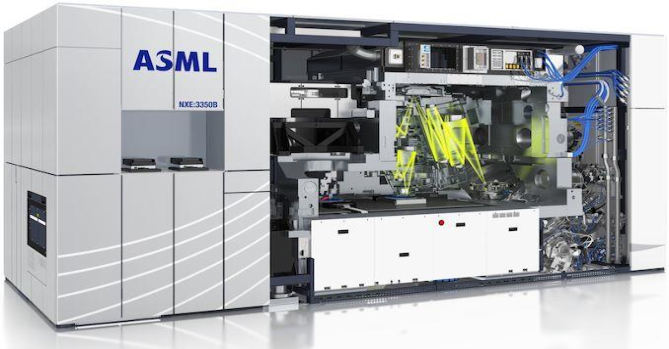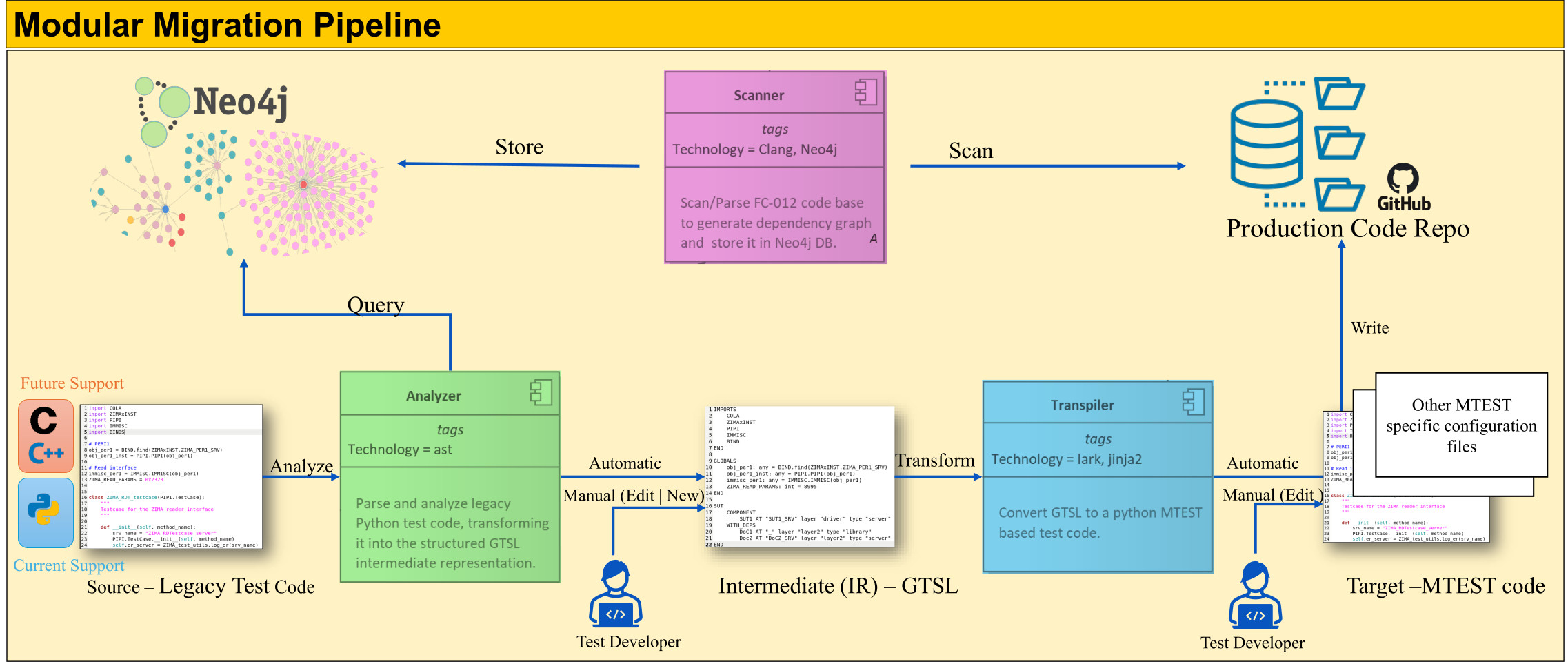2Mtest - Legacy Test Migration at ASML
A semi-automatic tool for migrating legacy test cases to modern testing framework (MTEST)
As part of my Engineering Doctorate (EngD) final project at ASML, I tackled a common challenge faced by many large tech companies: migrating thousands of legacy test cases to a modern testing framework. Here’s how I built a semi-automatic tool to transform legacy Python tests into ASML’s new MTEST framework. Semi-automatic means that the tool does most of the work automatically but still needs a human to check and make sure the results are correct.
Problem
ASML’s TWINSCAN lithography machines rely on a massive software stack that contain over 60 million lines of code developed over 40 years. Traditionaly, testing required initializing the entire system just to test a single component, leading to excessive CPU usage and slow test cycles. While ASML’s new MTEST framework enables isolated module testing, migrating existing tests manually was time consuming taking engineers over 5 hours per test case, error prone and costly.

Solution: A Three-Stage Pipeline
To tackle the problem mentioned earlier, I designed and developed a semi-automatic migration tool consisting of three core components that work together in sequence. The figure below shows the overall architecture of the migration pipeline.

1. Scanner - Building the Knowledge Graph
The Scanner is the first component in the migration pipeline, responsible for processing large-scale ASML C/C++ codebases to extract dependency graph at the function level and store it in Neo4j graph database. This graph data serves as a single source of truth to be queried later by the Analyzer to understand the dependencies accross components.
Neo4j is a graph database that stores information as nodes and relationships unlinke relational databases that store data in tabular form. Using Neo4j, it is easier to model and query connected data in a way that feels closer to how things relate in the real world. Unlike relational databases that depend on joins, Neo4j uses index-free adjacency, meaning each node directly “knows” its connected nodes without needing a global index lookup. This allows extremely fast traversal through large networks and makes Neo4j very efficient when working with highly connected data like call graphs in a complex source code base.
2. Analyzer - Understanding Test Intent
The Analyzer takes inconsistent legacy Python tests and figures out what they’re actually testing. Using a backtracking algorithm, it:
- Starts from assertion statements and traces backward to find the System Under Test (SUT)
- Identifies test inputs by analyzing function arguments
- Extracts expected outputs from assertion comparisons
- Partitions test code into Given-When-Then structure
The output is GTSL (Generic Test Specification Language), a domain-specific language I created as an intermediate representation. Think of it as a structured, human-readable format that captures the essence of any test regardless of the original language.
# Example GTSL Output
IMPORTS
MOKA
LITXCAT
ERROR
END
GLOBALS
ZIMA_READ_PARAMS: hex = 0x2323
END
SUITE ZIMA_RDT_testcase
DESCRIPTION "Testcase for the ZIMA reader interface"
SETUP
call obj_per1_inst.terminate()
set self._pipipos_per1 = call PIPI.PIPIPOS(obj_per1)
END
CASE test_case_1
DESCRIPTION "Test case 1 for ZIMA reader interface"
INPUT
in reader_elem: any
in flag: bool
in scramble: bool
END
OUTPUT
out expected_out_1: float
out expected_out_2: bool
END
GIVEN
call obj_per1_inst.initialize()
set flag = 'FALSE'
set reader_elem = call self._populate_pos_param(8995, 'ZIMA_READ_PARAMS')
set scramble = False
END
WHEN
set reading_time = call immisc_per1.check_reading_time(reader_elem, flag, scramble)
END
THEN
call self.assertEqual(reading_time, 0.9)
call self.assertTrue(reader_elem.is_valid())
END
END
END
3. Transpiler - Code Generation and Environment Setup
The Transpiler component converts (transforms) the abstract GTSL representation, produced by the Analyzer, into target Python test code that is compatible with the MTEST framework. In addition, this component is responsible for generating various configuration files required to run the test code on ASML’s testing environment. To achieve this, the Transpiler’s design follows three typical stages borrowed from compiler design.
Key Design Decisions
GTSL as Intermediate Language
Rather than going directly from Python to Python, we introduced GTSL as a bridge. This allows engineers to review and manually correct the analysis before final code generation.
Modular Architecture
Each component has a single responsibility and communicates through well-defined interfaces. This makes the tool extensible for future needs, like supporting C/C++ test migration or replacing the analyzer component with LLM.

Dependency Graph First
By pre-computing the entire codebase’s dependency graph, we can instantly answer complex questions like “what components does this function depend on?” without expensive runtime analysis.
Results and Impact
Based on the project’s results, the following claims can be made. First, the project demonstrates that the migration process, which previously required several hours of manual effort and the creation of more than seven separate files, can now be completed in less than five seconds. The tool automates the gen-eration of all required files for MTEST-based test cases, thereby solving the inefficiency of manual migration. Second, the project shows that the dependency graph of the production code not only cap-tures function-level relationships between components but can also be used for other use cases, includ-ing risk analysis, detection of dead code, and code refactoring. Third, the tool is not limited to migrating legacy test cases; it can also be used to create new MTEST-based test cases from scratch, thereby ex-tending its utility beyond migration alone.